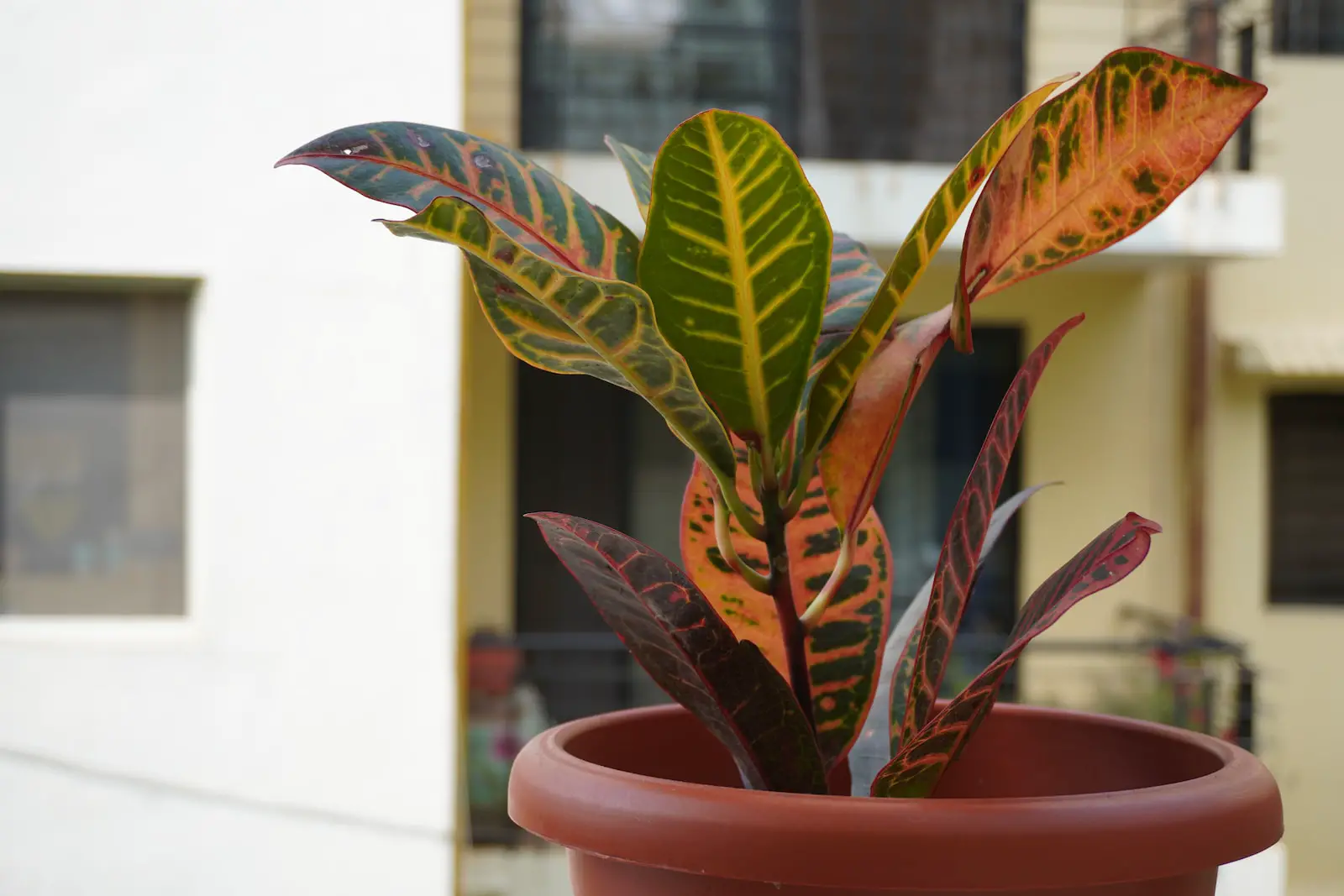The Croton Plant, a vibrant tropical evergreen, is known for its colorful, glossy foliage that comes in a wide variety of patterns and shades. With colors ranging from green and yellow to red, pink, and even purple, the Croton Plant brings a lively pop to indoor spaces. The intricate patterns and dazzling colors on the leaves of this plant have led to its immense popularity among houseplant enthusiasts.
Originating from the Western Pacific Islands, Malaysia, and parts of Australia, the Croton Plant is from the genus Codiaeum, which comprises many species with varied leaf shapes and colorations. Often utilized as ornamental plants, Crotons add beauty and character to both indoor and outdoor gardens.
The Croton Plant is more than just a visual delight; its leaves have been used in traditional medicine, particularly in Indonesia and other Southeast Asian countries. Despite its many advantages, care must be taken, as it can be toxic to pets when ingested.
| Attribute | Details |
|---|---|
| Common Names | Croton Plant, Variegated Croton |
| Botanical Name | Codiaeum variegatum |
| Family | Euphorbiaceae |
| Plant Type | Evergreen Shrub |
| Mature Size | 3-8 feet tall |
| Sun Exposure | Bright, indirect light |
| Soil Type | Well-Drained, Fertile Soil |
| Hardiness Zones | 10-12 |
| Native Area | Western Pacific Islands, Malaysia |
Croton Plant Care
Croton Plants are relatively easy to care for, but they do require attention to detail. They thrive best in bright, indirect sunlight and prefer a humid environment. Regular misting or a pebble tray with water can help maintain the necessary humidity.
Watering should be consistent but moderate, with the soil allowed to dry slightly between watering. Over-watering or under-watering can cause leaf drop. Proper fertilization, soil, and attention to pests are also essential for a healthy Croton Plant.
Light Requirement for Croton Plant
Croton Plants need bright but indirect sunlight. Direct sunlight can scorch the leaves, while too little light will lead to loss of vibrant colors. Eastern or western exposure with filtered sunlight is often ideal.
Soil Requirements for Croton Plant
Well-drained and fertile soil rich in organic matter is best for Croton Plants. A good quality potting mix with added compost or peat moss can provide the necessary nutrients.
Water Requirements for Croton Plant
The Croton Plant requires consistent but moderate watering. Allow the soil to dry slightly between watering, but do not let it dry out completely, as this can cause leaf drop.
Temperature and Humidity
Temperature ranges between 60-80°F are suitable for Croton Plants, with humidity levels around 40-80%. Too low humidity can lead to dry, brown leaf tips.
Fertilizer
During the growing season, fertilize the Croton Plant every 4-6 weeks with a balanced, liquid fertilizer diluted to half the recommended strength.
Pruning Croton Plant
Pruning can be done to shape the plant and remove any dead or damaged leaves. Best done in the spring, it encourages new growth.
Propagating Croton Plant
Stem cuttings can be used to propagate the Croton Plant. Take a cutting of 3-4 inches, remove the lower leaves, and plant it in moist soil.
How To Grow Croton Plant From Seed
Growing Croton Plants from seeds is rare and can be challenging, as the seeds are often hard to find. If attempting, sow seeds in a well-draining soil mix and maintain warmth and humidity.
Common Pests & Plant Diseases
Spider Mites
These can be treated with insecticidal soap or neem oil.
Scale
Commonly seen on the underside of leaves, manual removal or insecticidal soap can be effective.
Common Problems With Croton Plant
Leaf Drop
This is often a result of drastic changes in light, temperature, or moisture levels.
Loss of Leaf Color
Insufficient light can cause the leaves to lose their vibrant colors.
Pro Tips
- Avoid sudden changes in light or temperature to prevent leaf drop.
- Maintain humidity through regular misting or a pebble tray with water.
- Rotate the plant occasionally for even growth.
- Keep away from pets, as it can be toxic when ingested.
- Use filtered water if tap water causes mineral build-up or leaf spotting.




